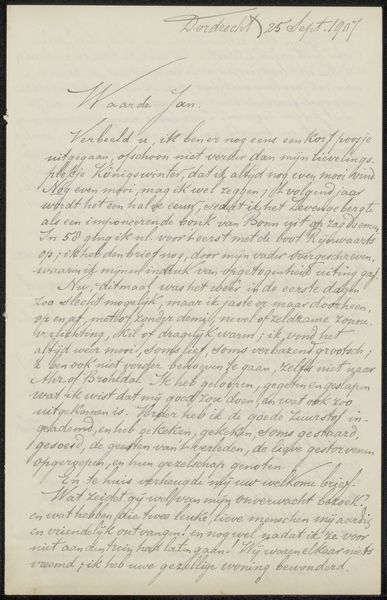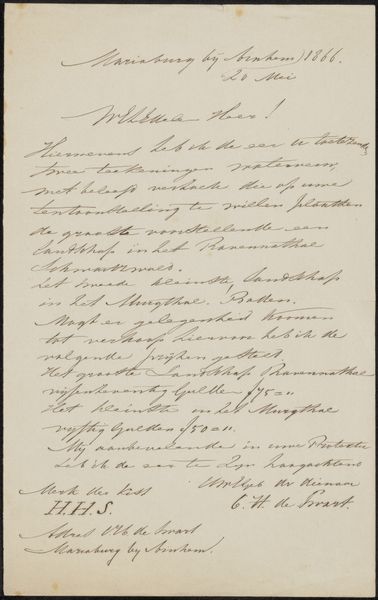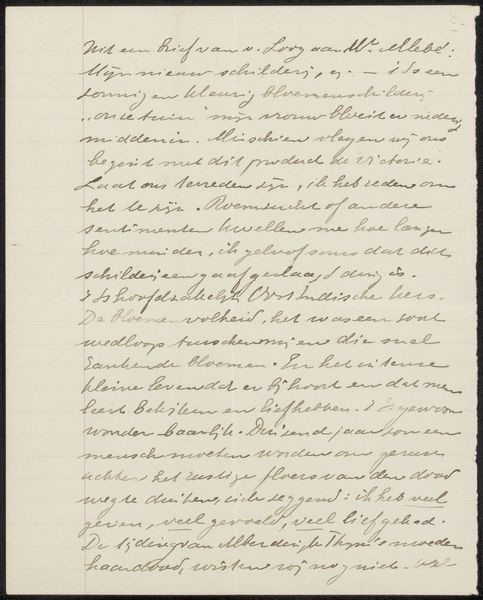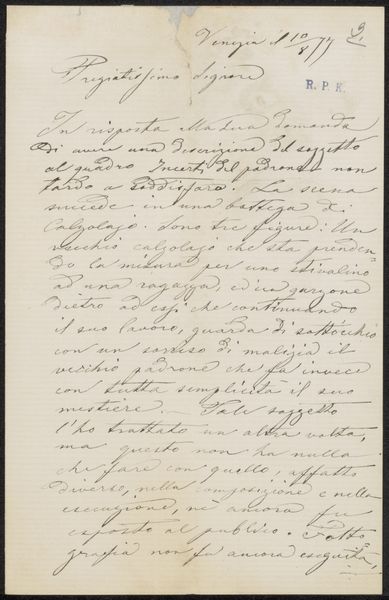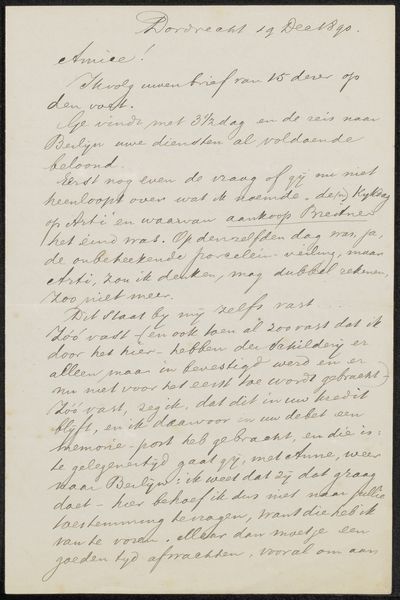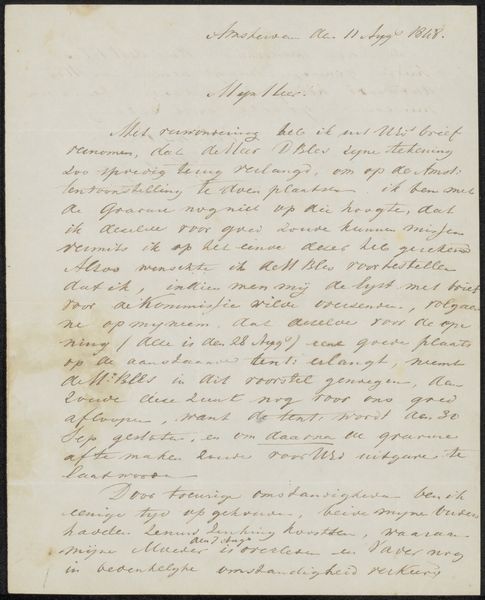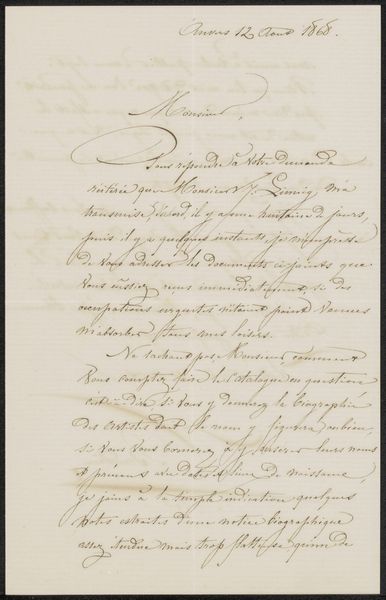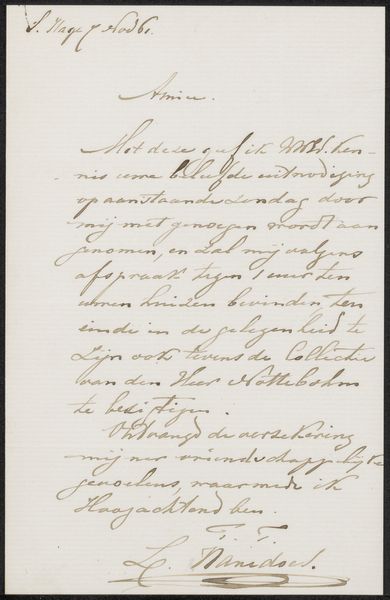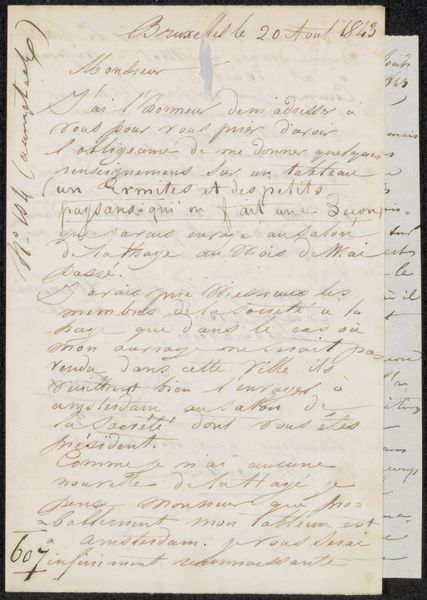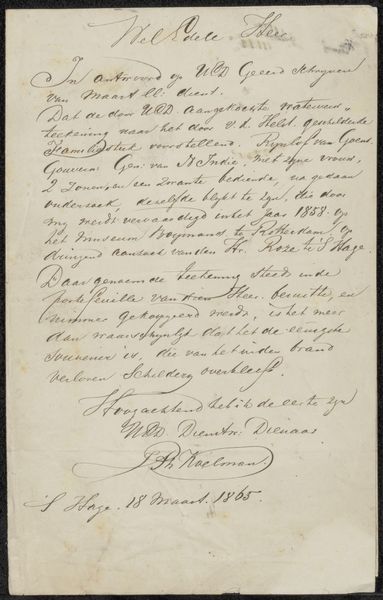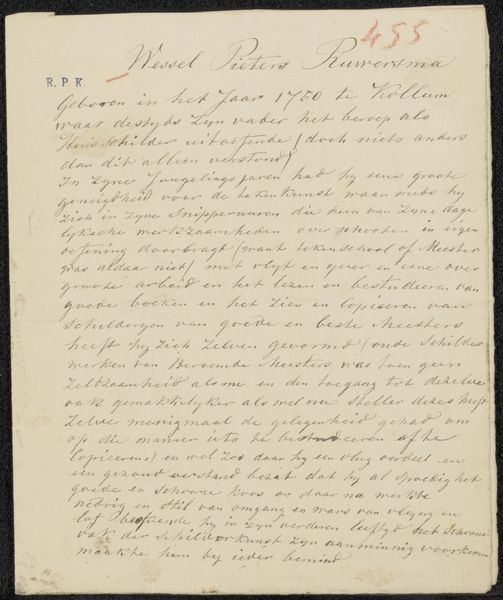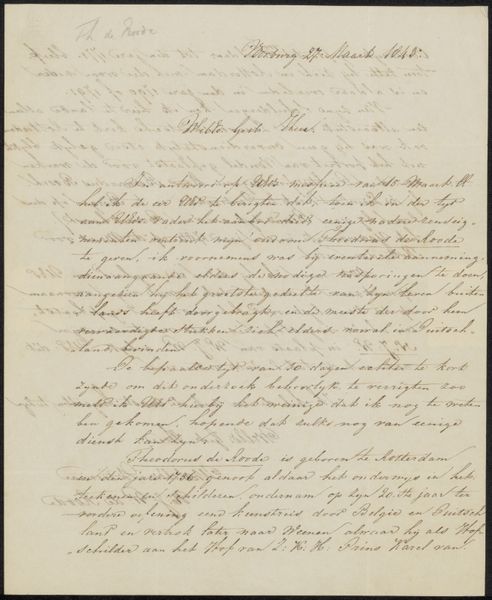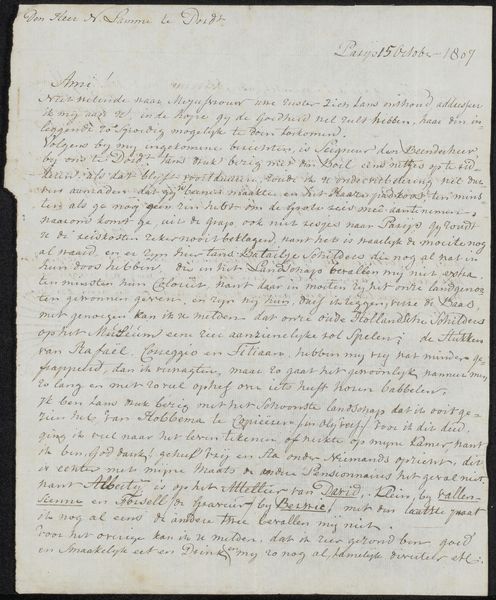
drawing, paper, ink, pen
#
portrait
#
drawing
#
paper
#
ink
#
pen work
#
pen
#
calligraphy
Copyright: Rijks Museum: Open Domain
Curator: Here we have "Brief aan Jan Veth," potentially created in 1909 by Adrianus Jacobus Terwen. It's a drawing, pen on paper, featuring pen work and calligraphy. What strikes you first? Editor: The texture! It’s a deeply layered surface of delicate, swirling lines. It projects a subtle and refined quality to me—almost a whisper on the page. Curator: Indeed. Given Terwen's circle, it’s tempting to consider the intended audience of this letter and its effect on his execution and choice of materials. What kind of socio-cultural exchange was taking place at that time? Editor: Let's zoom in—see how the fineness and detail give it an almost ethereal feel, yet grounded by the precise control of line and shadow? The pen work is remarkably consistent. I’m seeing hints of symbolism within that formal mastery. Curator: The artist alludes to a photographic portrait, doesn't he, hinting at prevailing portraiture conventions. Consider this in context; what conventions is he pushing against with a hand-drawn approach? And what's Jan Veth’s position in this dialogue? Editor: Well, Jan clearly holds importance. There’s intent evident here, not only in skill but in emotional resonance. Each stroke appears carefully placed, building a structure where form echoes feeling—a powerful unity. Curator: It raises interesting questions about friendship, artistic exchange, and the power dynamics of the art world at that time. How do social standing, power relations, and politics impact what the artist is ultimately expressing through something seemingly as simple as a portrait and a letter? Editor: It does pull you into a fascinating study of details. I am struck, on a basic level, by Terwen’s artistry—and the elegant simplicity through sophisticated compositional arrangements. Curator: Understanding the historical, social and relational circumstances provides some critical frameworks. Hopefully our listeners also will take a second look through new frameworks, considering what power structures may have framed even the intimacy captured on this piece of paper. Editor: I hope, too, that listeners have enjoyed considering the way structure and nuance enhance each other and make visible a work that on the surface can appear simply archival, personal, documentary.
Comments
No comments
Be the first to comment and join the conversation on the ultimate creative platform.
